Table of Contents
When people view search engine results pages (SERPs), they expect to find tools, information, and resources that match their wants and needs. One thing that helps them sift through listings is the meta description, a small excerpt in the search listing that shares more details about the content of the web page.
Your meta description is essentially your sales pitch to users. It’s your chance to convince them that your webpage is worth clicking on, that your site will be worth their time. So how do you create a meta description that users find irresistible? More on that soon. First…
What is a meta description?
A meta description is an HTML element that gives the browser a small summary of your web page’s content to display on SERPs. It is a snippet of text located underneath your page title and URL:

You will also see the meta description on social media advertisements on LinkedIn, Facebook, Twitter. The meta description is usually displayed under a thumbnail, like this:

Webmasters use this space to sell their web page to search engine users, convincing them to click on the title and browse the content.
As such, crafting the perfect meta description is an essential part of any successful search engine optimization (SEO) strategy.
Do meta descriptions affect SEO?
Search engines do not use the content in meta descriptions to determine SEO rankings. While their impact isn’t direct, meta descriptions do impact your click-through rate (CTR). CTR refers to the number of people who see your page on a search engine results page compared to the number of people who click on it. If 100 people see your listing on the SERP, but only 2 people click on it, your CTR is 2%.
CTR is an important SEO metric to track because people need to actually click on your content before you can convert them into customers. In the SEO industry, there is much debate on whether CTR influences SEO performance, although Google claims that it is not a ranking factor.
The truth is that the number one listing on the SERPs receives more than 30% of all the clicks.
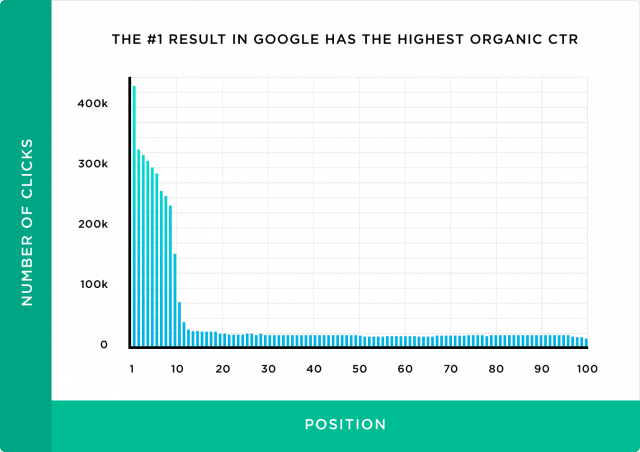
No matter how it ends up at the top spot, there’s no denying that generating more clicks on your listing is something to strive for. Since meta descriptions provide a chance to persuade users to click on your website, they remain an integral part of improving your share of the overall organic search traffic.
How to write a meta description for SEO: 9 tips
Because the meta description is your sales pitch to search engine users, it’s important that you make it interesting, relevant, and persuasive.
Putting user experience first is one of the fundamental SEO principles that every content marketing strategy needs. Follow these nine tips for writing meta descriptions to prove your listing is worth clicking.
Describe the page accurately
A 2017 study on clickbait use in modern marketing found that the use of it had grown nearly 6% from 2014-2016. And internet users have grown weary of these types of videos and stories.
When you write a misleading meta description that doesn’t accurately reflect the page’s content, you are doing long-term damage to your brand reputation for a short-term gain in your CTR.
Consider the following example:
You own a life coaching business that sells one-on-one coaching sessions, printable worksheets and templates, and an ebook. Your meta description reads:
Sick of running in circles and need help building the life you always dreamed of? Get a free self-evaluation here to get started!
Now, there’s nothing inherently wrong with this meta description. It plays to emotion, has a call-to-action, and is the right length.
But, let’s say, when the user clicks through, all they find are the products and services you sell. Seeing no mention of your free evaluation anywhere on the page, they hit the back button and click through to another result. To Google, this is a sign of bad user experience.
Users should be able to read your meta description and see the exact promise or action that the message uses to invite them in. In other words, the meta description should make the promise, and the page should deliver on it.
Don’t repeat content in the title
Your meta description has limited space, so you don’t want to waste it repeating what you’ve already said in your title tag.
Searchers read meta descriptions for additional information beyond what they can see in the title. This Nickelodeon description for the search term “fun games for kids” demonstrates how to expand on the title information:

After reading the description, the user knows that the games target preschool-age children, cover math and reading skills, and require a computer because they’re online.
This type of clarification:
- Helps users decide whether or not to click
- Improves your CTR
- Makes your listing stand out from others
You may even consider adding schema markup to your metadata in order to produce rich snippets. This will further enhance your meta description and distinguish it from the title content. As your pages pick up more traffic, the algorithm may consider ranking them higher in the results.
Answer the question “What’s in it for me?”
Users unconsciously ask the question “what’s in it for me?” when they’re browsing search results. When formulating any of your SEO content, you should be trying to answer this question.
Because the title tag is shorter, the meta description is where you can truly address the user’s needs. Consider the four types of user search intent, which give you an idea of what type of content people are looking for with each query.
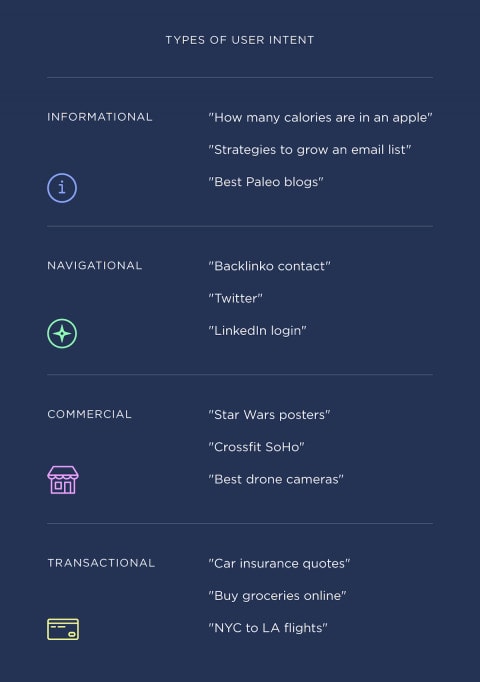
If users are looking for the “best Paleo blogs,” your meta description should imply why yours is the best. If users are looking to buy Star Wars posters, your description should tell them how extensive your selection is, what your prices are, and how long they take to ship.
Remember: a great meta description tells the user the most important information they need to know about your web page and how it serves their needs. It’s like your SERP elevator pitch.
Use your focus keyword
It shouldn’t be a surprise that you need to include your focus keyword in your own meta description. Although the description doesn’t directly impact your ranking, Google will bold any keywords so that users can determine how relevant the content is to their search.
This is the top result for “how to baste a turkey:”
 Make a note that the keywords don’t necessarily have to be in order, although putting them in order is the most ideal option. The search engine simply bolds the search terms that appear in the description so users can see them.
Make a note that the keywords don’t necessarily have to be in order, although putting them in order is the most ideal option. The search engine simply bolds the search terms that appear in the description so users can see them.
Most SERPs have millions of listings to offer. A cursory amount of research on these pages shows that none of them are missing meta keywords.
Also, to improve user experience, Google search results oftentimes cut off the available listings. Just take a look at this notice from the same turkey basting search:

This notice is on page 22 and it requires users to re-do their search if they want to have access to all the listings. It means that search engines are becoming even pickier about what they choose to display.
If your meta description is missing focus keywords, it’s likely not competing with top results.
Include a call-to-action
One of the most powerful SEO copywriting methods is to write a call-to-action – something which motivates or encourages the user to engage with your site.
Usually a call-to-action is designed to get a customer to buy a product, make a donation, sign up for a consultation, etc. When it comes to search engine results, your goal is to get the user to click on your listing.
Consider one of the top results for “online marketing courses free:”

You can see from this meta description that the marketers used the keywords in a way that made sense and gave the users an actionable task: to learn more by clicking on the link.
Depending on what type of brand and content you have (informational, ecommerce, small business, etc.) your call-to-action may be different. However, an excellent call-to-action:
- Appeals to emotions like desire and curiosity (EX. “you don’t want to miss out)
- Includes commands (EX. “sign up for a consultation”)
- Provides motivation (EX. “this will change your life”)
- Uses numbers (EX. “only $200, a steal!”)
Overall, writing a call-to-action is all about considering what the user wants to find from their search query and appealing to the emotion that drives that desire.
Avoid truncation with ideal meta description length
If your meta description is too long, the search engine will truncate it (cut part of it off from view). This is what truncation looks like:
 In 2020, the average page title was 51 characters long while the average description was 167 characters long.
In 2020, the average page title was 51 characters long while the average description was 167 characters long.
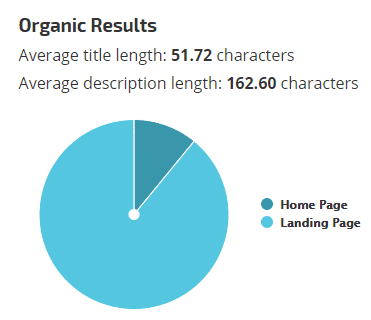
Most SEO professionals suggest that your meta descriptions be no longer than 155-160 characters because that is the cut-off point. However, it’s hard to get a clear estimate due to the fact that Google frequently changes how it displays results.
A Moz investigation of meta description truncation found that many descriptions in the high 200s-300 character range were being fully displayed. That study suggested that marketers experiment with longer descriptions to see how they are displayed.
Plus, these estimates fluctuate for mobile devices which have smaller space to display text. Because of these discrepancies, you’ll probably be okay if your meta description is between 50 and 150 characters.
But since Google fits the SERP listings to each device size, the cut-off point may vary. That’s why some in the SEO industry recommend following the description’s pixel size instead.
You can use the Seobility SERP Snippet Generator to test your meta description for its pixel size. They recommend producing a description that’s less than or equal to 1000 pixels.
Don’t keyword stuff
After doing keyword research on your topic, you want to use those search terms to your advantage. Keep in mind that you have limited space to get your point across. If you waste your meta description on keyword stuffing, you won’t highlight the value of your content.
Here is an example of what overusing keywords looks like for the search term “gold watch:”
 Notice how the description repeats itself multiple times? The keywords are used throughout the small description. This doesn’t make Google rank your page higher. It only wastes space that you could use to tell the searcher something more about your content.
Notice how the description repeats itself multiple times? The keywords are used throughout the small description. This doesn’t make Google rank your page higher. It only wastes space that you could use to tell the searcher something more about your content.
In certain cases, repetitive or parallel sentence structure can be a useful writing tool that sets your description apart. However, in this case, the words simply repeat themselves without speaking to the website’s credibility or providing any unique insights on the content.
Take a look at this example for “how to create a workout plan” which uses the keywords just once:

When you write the meta description, adding the keyword once is perfectly acceptable. In fact, search engines will penalize you for trying to rank higher by overusing your keyword. So use your keyword multiple times if you need to, but do it naturally.
Don’t let your CMS auto-generate meta descriptions
You might be wondering: “what happens if I don’t write a meta description myself?” In most cases, whichever CMS you use will auto-generate one for you. That seems like the easier route, but at the same time, you won’t be guaranteed quality or relevance.
CMS-generated meta descriptions typically:
- Lack persuasive language
- Overuse or improperly use keywords
- Don’t have a call-to-action
- Come across as unclear or incoherent
If you feel that writing meta descriptions takes too long, you can try a generator like Metatags.org or SEOptimer. These tools may make it easier for you to incorporate all of the important components of your meta description, but you should always review the descriptions before you put them on your site.
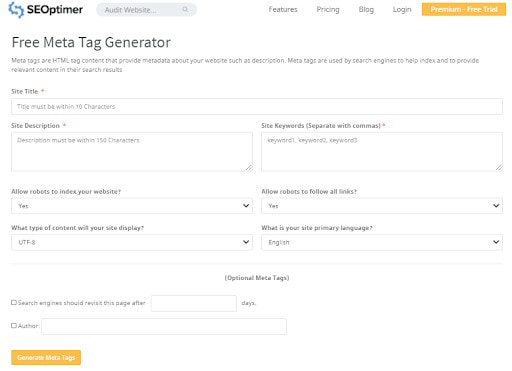
Ultimately, a search engine or CMS won’t know your content the way that you do. They won’t necessarily have the correct context needed to craft a truly persuasive and inviting meta description.
Don’t use the same meta description on two different pages
The search engine uses your description information to index your content. Remember, the search engine’s goal is to ensure that the most value-added, relevant pages are displayed first.
This is why it’s very important to write unique meta descriptions for each web page on your site. When you duplicate meta descriptions, this can flag the search engine to question whether the content is unique.
If two pages target the same keyword, make sure that you clearly distinguish them from each other with completely different descriptions.
Meta description examples
Sometimes it’s difficult to decide which pieces of information you should include in your meta description. Consider the following examples for different types of content:
Kings Island

This meta description positions Kings Island as the biggest park in the Midwest, appeals to emotions like excitement and happiness, and uses command verbs like “join us” and “visit.”
Bonita Jet Ski

This meta description starts with question to speak directly to the user about the content of the web page. It also explains exactly the kinds of rentals the business offers, and it includes locations so visitors know where they can rent.
HomeGoods

Because HomeGoods knows that customers love their store for its unpredictable, fresh, and unique product line, they play to that excitement with this enticing description for their website’s homepage. It also mentions furniture and rugs so visitors have an idea of what they’ll find on the site.
Spotify
 What’s great about this meta description is its creativity. After all, if Spotify really has all the music anyone will ever need, this description: is an optimal length, answers “what’s in it for me?,” doesn’t overuse keywords, and plays to consumer desire.
What’s great about this meta description is its creativity. After all, if Spotify really has all the music anyone will ever need, this description: is an optimal length, answers “what’s in it for me?,” doesn’t overuse keywords, and plays to consumer desire.
Aldi
 With this description, Aldi has managed to explain to the user how their service will improve their quality of life by saving them the time and hassle of shopping. It also uses keywords appropriately and isn’t too long.
With this description, Aldi has managed to explain to the user how their service will improve their quality of life by saving them the time and hassle of shopping. It also uses keywords appropriately and isn’t too long.
How do I add a meta description to my page?
Once you’ve written a meta description, you need to add it to your page by adding a meta description tag.
The first way to do this is through HTML code. Simply add this to the <head> element of your source code:
<meta name=”description” content=”Insert your description here.”/>
There are many WordPress SEO plugins with easy-to-use features that allow you to add meta titles and descriptions without coding.
The Yoast meta description editor is an excellent resource: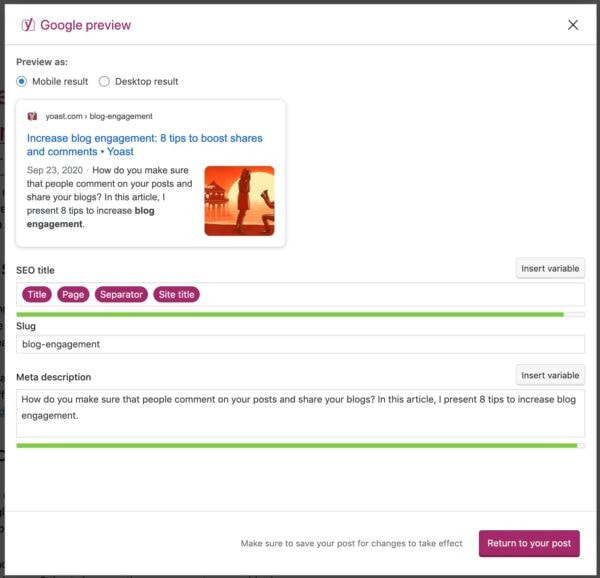
It allows you to view your meta description as both a mobile and desktop example. Plus, it will notify you if the length is too much or too little and help you verify that you have the correct keyword usage for your post.
Get a complimentary SEO audit
Writing a persuasive and high-quality meta description comes down to how well you understand your audience and its needs. In addition to important on and off-page SEO techniques, optimized meta tags are essential to creating web pages that lure users in and provide them with excellent value.
Implementing these nine meta description SEO tips will help you improve your CTR and increase your chances of earning lifelong customers and brand enthusiasts.
Want to see how you’re doing with SEO? Get an instant SEO audit below. Or, schedule a free consultation to see how intent SEO can boost search traffic revenue by 700%.
